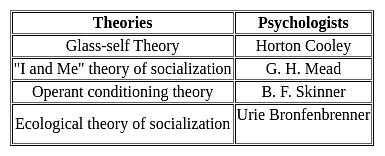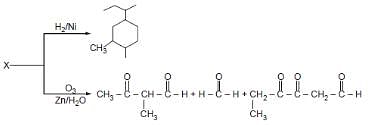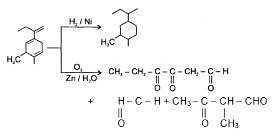KVS PGT Chemistry Mock Test - 9 - KVS PGT/TGT/PRT MCQ
30 Questions MCQ Test KVS PGT Exam Mock Test Series 2024 - KVS PGT Chemistry Mock Test - 9
In the following question, a sentence has been given in Active/Passive voice. Out of four alternatives suggested, select the one which best expresses the same sentence in Passive/Active voice.
Q. Why are they laughing at you?
Improve the bracketed part of the sentence with the parts given below.
Q. The unseen passage put the students in (a lot of confusion.)
| 1 Crore+ students have signed up on EduRev. Have you? Download the App |
शब्द जब वाक्य में प्रयुक्त होने की योग्यता प्राप्त करता है; तो कहलाता है-
In which form of power sharing do we find the arrangement of the system of checks and balances?
From the given alternatives, select the word which CANNOT be formed using the letters of the given word.
FEARLESS
Select the option that is related to the third number in the same way as the second number is related to the first number.
25 : 650 :: 21 : ?
RTE Act 2005 has given the right to SMC to improve elementary education in the country except-
Role of community nurse in school Health program, EXCEPT
Which of the following belief of a teacher is detrimental to student’s learning?
The major role of primary school leading teachers is to:
The main approach suggested by NCF 2005 in the teaching-learning process is:
The PWD Act 1995 and RTE Act 2009 jointly made the provision to give free education to special children till _____ and to normal children till ______.
Teachers could be effective improvers of the curriculum because:-
The radioactive isotope used in determining the age of organic substances is
One Integer Value Correct Type
This section contains 1 questions, when worked out will result in an integer value from 0 to 9 (both inclusive)
Q. Certain brine solution has 3.87% NaCI by mass with density 1.036 g mL-1. How many millilitre of this solution should be evaporated to obtain 0.32 g of NaCI?
What is the correct structure for the major compound produced by the following reaction sequence?
Consider the cell Ag(s)|AgBr(s)|Br-(aq)||AgCl(s)|Cl-(aq)|Ag(s) at 25°C. The solubility product constants of AgBr & AgCl are respectively 5 X 10 – 13 & 1 X 10 – 10. For what ratio of the concentrations of Br- & Cl- ions would the emf of the cell be zero ?
The phenomenon in which adsorption and absorption takes place simultaneously is called?
What type of interaction hold the molecules together in a polar molecular solid?



















